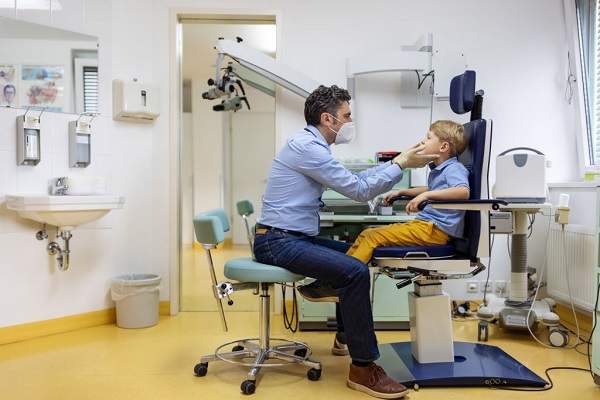Overview
Nosebleeds, known medically as epistaxis, are relatively common and typically benign conditions impacting children. That said, certain occasions might arise when said events could be cause for greater concern and warrant a trip to a pediatric ENT, which is short for Ear, Nose, and Throat doctor, or some other trained medical professional.
Causes
There are two common types of nosebleeds, anterior and posterior.
The anterior variety occurs when bleeding starts in the nose’s frontal region. Posterior events take place when bleeding commences in the nose’s rear.
Typically, posterior epistaxis precipitates heavier bleeding that is more difficult to contain. Fortunately, however, children are most often impacted by anterior occurrences.
In an appreciable percentage of cases, anterior events in children result from irritation or inflammation of the tiny blood vessels situated in this nasal region.
Several underlying factors could contribute to the damage or rupture of these circulatory structures, including exposure to dry air, picking one’s nose, some type of upper respiratory illness, nasal allergies, a facial or nose-related injury, or the use of nasal sprays.
More serious but far less common nosebleed precipitators in young people include the use of specific medications, underlying heart disease, high blood pressure, certain blood disorders, and cancer.
When to Consult ENT Doctors?
In many instances, epistaxes in youths are short-lived and not usually cause for alarm. However, parents are urged to consult with a pediatric ENT doctor or their primary care provider under the following circumstances:
Other Potentially Serious Symptoms Are Present
If a child’s epistaxis is accompanied by other potentially worrisome symptoms like dizziness, headaches, pain, or weakness, a prompt medical evaluation should be given.
Bleeding Began After Some Type of Traumatic Event
If the youth’s nose began bleeding following some type of trauma, such as a car accident, fall, or sports-related contact, a quick assessment from a healthcare provider is warranted.
These mishaps might have precipitated injuries that induced internal bleeding from other bodily regions like the head, mouth, or upper respiratory system, which could manifest in the nose.
The Bleeding Will Not Stop
A child should receive immediate medical attention if their epistaxis continues uncontrolled. Most non-serious incidents will stop within 10 minutes or after placing pressure on the nose.
Bleeding Is Chronic Along With Other Troubling Signs
Should these events continue and be accompanied by other repeated events like easy bruising or bleeding in other bodily regions from minor scrapes or injuries, further medical assessments should be undertaken.
Treating Epistaxis In Children
Treatment will depend upon certain notable factors, including the events leading up to the bleeding incident if the child has any known underlying conditions, and how much blood spewed out of their nose.
If the occurrence commenced following a traumatic event or the youth in question has previously been diagnosed with a precipitating illness, a prompt visit to a local emergency department may be indicated.
That said, if the events happen repeatedly but do not involve much blood and are not accompanied by any other alarming physical manifestations, a thorough exam by a team of ENT doctors could prove beneficial in identifying the root cause and prescribing the most appropriate therapy.
Final Thoughts
Nosebleeds are somewhat common in young people. However, said events typically last for short durations, are not accompanied by other problems, and are not indicative of any serious underlying illness.
That said, when these episodes happen more frequently, occur with other untoward or potentially dangerous symptoms, or in the wake of some type of accident, evaluation by an emergency services physician or pediatric ENT doctor might be necessary.


